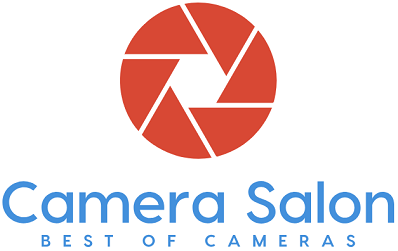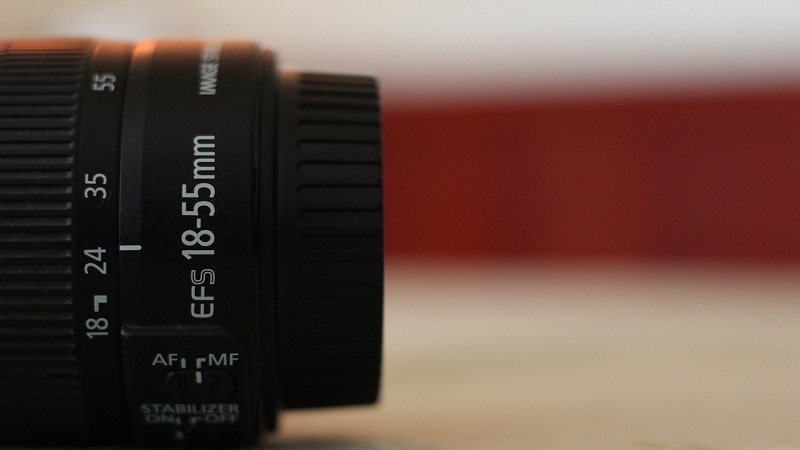Is a kit lens good enough to take beautiful images? Yes, your kit lens is much better than you think and it can help you learn the tricks of the trade before you move on to more advanced and expensive lenses.
The kit lens can take good images but can it create great images? Should you keep it or instantly upgrade to a more advanced lens?
We are going to find the answers to all these questions in our article. We will discuss the benefits and limitations of a kit lens as well as how to use it.
What is a Kit Lens?
In simple words, your camera kit also includes a lens along with the camera body and other accessories. It can have any focal length, optical quality, and aperture. Most often, however, it is an 18-55mm zoom lens with a maximum aperture range varying from f/3.5-5.6.
Normally, you abandon your inexpensive kit lens as soon as you can buy a more advanced lens. The 18-55mm zoom lens is the best of all kit lenses due to its certain features.
It is a versatile lens to begin with. It allows you to take excellent landscapes at 18mm and beautiful portraits at 55mm. Similarly, the 35mm (almost in between) is ideal for street photography.
However, some cameras come with other kit lenses as well. For example, you will find the excellent 24-70mm f/4 kit lens in the Nikon Z6’s bundle. Therefore, the quality of the kit lens is directly proportional to the price of your camera. The more expensive the camera, the better will be the quality of the kit lens.
Professional photographers who know all the ins and outs of photography can capture stunning photos using their kit lenses. After all, it is the photographer, not the gear that matters in the end. However, you do need a good camera and lens combination as well and your new camera and the included kit lens can do the job just fine for you.
Kit Lens vs Prime Lens
Kit lenses are mostly zoom lenses with variable apertures. However, they do have fixed apertures in the case of more expensive cameras such as the Nikon Z6.
Prime lenses, on the other hand, have fixed focal lengths as well as apertures. The example of a kit lens is 18-55mm f/3.5-5.6 while 50mm f/1.8 is an example of a prime lens.
Is a Kit Lens Bad for Photography?
Most kit lenses are inexpensive by nature. Camera brands are making cheaper kits with inexpensive kit lenses to beat the tough competition. You can start shooting images using the kit lens and get an advanced one when you have enough experience and money.
But – is it better to stick with a kit lens or get a new one instantly?
No, you don’t need to buy an expensive glass straight away no matter what others say. You can start taking seriously beautiful photos with your kit lens. Don’t sweat it if you have no idea which lens to buy or you cannot afford an expensive lens. Just spend time learning how to use the kit lens and you will be surprised by the results it offers.
You can also check the post of Jingna Zhang, a professional editorial and fashion photographer if you don’t believe me.
She is an exceptional photographer who started with Canon EOS 350D and 18-55mm kit lens. She takes high quality images with these basic gear. See for yourself and they will blow you away.
So, you should hold on to your kit lens if you don’t know which lens is best for your camera. It can even help you take images that are good enough for publication.
What is the Kit Lens Good for?
Kit lenses offer a lot of benefits even though they have a pretty bad reputation.
They are Lightweight and Compact (usually)
The kit lens can be an ideal first lens for you because they are small and lightweight. It makes it easier for you to deal with your camera besides being a very good lens for traveling as well as everyday use.
Kit Lenses are Versatile
Most kit lenses are zoom lenses with a few exceptions. They also have the most popular and widely used focal lengths which are 18-55mm. Therefore, they are ideal for landscape as well as street and portrait photography.
You can Find Your Ideal Focal Length
What kind of focal length do you want to work with as a professional photographer? A kit lens allows you to test a full range of focal lengths, helping you to buy the lens that is compatible with your type of photography. For example, you can buy a 50mm prime lens if you love creating portraits or a 20mm wide-angle lens for landscapes.
They are Convenient
A kit lens enables you to start photographing without wasting any time whenever you buy a new camera. It allows you to shoot at different focal lengths while you are planning to buy more zoom and prime lenses for your camera.
You Learn to Use Your Camera
Apart from starting shooting straight away, you can also start learning how to use your camera while shooting images. You can understand things like your camera menu and various settings such as shutter speed, aperture, autofocus, image stabilization, and so on. The more you use the camera, the better you get at photography.
How to Get the Best of Your Kit Lens?
Can you take good pictures with a kit lens? The answer is yes if you know how to make the most of it. You can capture beautiful images with a kit lens by implementing the following tips.
Use the Right Focal Length
You can take excellent wide images with a kit lens. However, images may start getting distorted as the focal length gets wider. You can create more pleasant images by using your position to get wider after zooming into the subject only by a small amount.
Be Aware of Your Aperture
Every lens can be sharpest only at a single spot. Your images can develop softness if you shoot at the maximum aperture in low light. The best aperture range for kit lenses is f/5.6-11 if light conditions are perfect. The images taken anywhere between this range tend to have high sharpness and the least softness.
Use Image Stabilization
You can get sharp images by shooting at narrow apertures. However, it also requires the right ISO settings and shutter speed. You can use the image stabilization of your lens to create steady and sharp images even at low shutter speeds.
Get Close to Your Subject
Shooting at high apertures also will create a beautiful depth of field. However, the widest aperture for a kit lens is f/3.5 which is not enough to accomplish the goal. You can create a beautiful background blur by getting close to your subject though.
Disadvantages of a Kit Lens?
The best kit lens can help you get going straight away while learning the art of photography. Still, it has some disadvantages that are as below.
Poor Build Quality
Kit lenses are usually lightweight and compact, perfect for everyday use. However, they are usually made of plastic (even the lens mount) and don’t have any kind of weather sealing. However, this is understandable because a cheaper lens will always have poor build quality and lesser standards compared to an expensive lens.
Inferior Optical Quality
A kit lens cannot make the most of your camera’s features and capabilities. The camera sensors can perform even less than 50% of their full capacity in the case of an 18-55mm kit lens. However, they can use somewhere from 50% to 100% of their features and capabilities when you use an advanced lens. Inferior optics can also create chromatic aberration and distortion in your images.
Lesser Image Quality
Inferior optical quality also means comparatively poor image quality. One thing that gets affected the most is image sharpness.
Narrower Apertures
A professional 24-70mm zoom lens lets a lot of light enter the lens thanks to its very wide f/2.8 aperture. A professional 50mm f/1.8 lens has an even wider aperture. Unfortunately, an 18-55mm has f/3.5 or even narrower apertures. Therefore, it may struggle to produce beautiful images in low light. Variable apertures also make it difficult for filmmakers to have the right camera settings for videos.
Best Lenses to Buy after the Kit Lens
What lens you should buy when you think it is time to upgrade to a new lens? The following are a few recommendations.
24-70mm f/2.8 Zoom Lens
It is perhaps the most popular lens in the world and an essential part of any professional photographer’s kit. It is a great lens but pretty expensive as well. It has an extremely versatile focal length and it delivers impressive performance in low light as well. Canon makes the best 24-70mm f/2.8 lens in the world.
50mm f/1.8 Prime Lens
Instead of a 24-70mm lens, upgrading to the popular nifty fifty 50mm f/1.8 prime lens is a more sensible option. It is also an inexpensive lens with a very fast f/.8 aperture. Therefore, it allows better images and more creativity in low light. The fast aperture also creates a shallow depth of field and beautiful background blurs or bokeh.
35mm Prime Lenses
50mm is a good focal length for portraiture. However, you should try 35mm lenses if you want something wider. All the major brands make excellent 35mm lenses both for their full-frame and crop-sensor cameras.
Also Read: What Settings Should I Use For Snow Photography?
Frequently Asked Questions
Are kit lenses good enough?
They offer a versatile range of focal lengths, making them suitable for a variety of shooting conditions. Although they may not have the superior optical quality of more expensive lenses, they are a cost-effective and practical solution for everyday photography.
Can you take good photos with a kit lens?
Yes, you can take good photos with a kit lens. Their versatility in focal length and improved technology over the years enable them to capture quality images in many conditions. While they might lack the low-light capabilities and sharpness of more expensive lenses, good technique and understanding of light can compensate for these limitations.
Are lens kits worth it?
Kit lenses are worth it for those starting in photography or working within a budget. They offer a range of focal lengths and functionalities at a more affordable price point than buying lenses separately. For hobbyists and those learning photography, lens kits provide a practical and economical way to explore different types of photography.
Is a kit lens better quality than a prime lens?
A kit lens is generally not of better quality than a prime lens. Prime lenses have simpler optical designs, often leading to better image sharpness and larger maximum apertures, which are beneficial in low light and for depth of field control. Kit lenses, however, offer more flexibility with their zoom capabilities, making them a versatile choice for everyday photography.
What is a 18-55mm lens good for?
An 18-55mm lens, commonly known as a kit lens, is good for everyday photography, including landscapes, portraits, and general use. Its wide-angle to mid-telephoto range makes it versatile for beginners, offering decent quality across a variety of shooting scenarios without the need to change lenses.
Final Thoughts
Is a kit lens good enough for photography? I hope we have provided a satisfactory answer to the question. It is an ideal starting point for new photographers. Similarly, it is a small and lightweight lens that even experienced photographers can carry with them when they travel. It does have some shortcomings but it will help you get on the right track and learn photography quite quickly.

